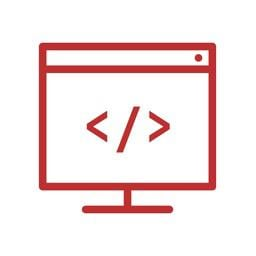How Static Website Development is Revolutionizing the Web: Trends, Technologies, and Industry Insights
How Static Website Development is Revolutionizing the Web
Introduction
Static website development is gaining momentum as a fast, secure, and cost-effective way to create web pages. Unlike dynamic sites, static websites consist of fixed content, offering numerous advantages that are changing how businesses and developers approach web design.
Trends in Static Website Development
- Jamstack Architecture: A modern approach combining JavaScript, APIs, and Markup. It allows developers to pre-render websites, enhancing speed and user experience.
- Headless CMS: Content management systems that decouple the frontend and backend. This enables seamless content delivery and improved flexibility.
- Static Site Generators (SSGs): Tools like Gatsby, Hugo, and Jekyll are empowering developers to create high-performance, easy-to-maintain websites with minimal server reliance.
Technologies Powering Static Websites
- CDNs (Content Delivery Networks): By distributing content across various servers, CDNs speed up loading times and enhance performance.
- Serverless Computing: Integrating with serverless functions for backend processes, making static websites even more efficient.
- GraphQL: Optimizes how static websites fetch data, providing a more streamlined approach compared to traditional REST APIs.
Industry Insights
- Performance: Static websites load faster, leading to better SEO rankings and improved user engagement.
- Security: With no dynamic backend, static sites are less vulnerable to hacking and data breaches.
- Cost Efficiency: Hosting static websites is more affordable due to lower resource consumption.
Conclusion
Static website development is redefining how websites are built and experienced, pushing for faster load times, stronger security, and a smoother user journey. The rise of tools and modern web practices only continues to shape this revolution.
Easyupload - The Role of Web Design and Development in Enhancing Brand Identity and Online Engagement
4shared - The Role of Web Design and Development in Enhancing Brand Identity and Online Engagement
Depositfiles - The Role of Web Design and Development in Enhancing Brand Identity and Online Engagement
Files.fm - The Role of Web Design and Development in Enhancing Brand Identity and Online Engagement
Uploadnow - The Role of Web Design and Development in Enhancing Brand Identity and Online Engagement
Mediafire - The Role of Web Design and Development in Enhancing Brand Identity and Online Engagement
Btafile - The Role of Web Design and Development in Enhancing Brand Identity and Online Engagement
Dz4up - The Role of Web Design and Development in Enhancing Brand Identity and Online Engagement
Dosya - The Role of Web Design and Development in Enhancing Brand Identity and Online Engagement
Filefactory - The Role of Web Design and Development in Enhancing Brand Identity and Online Engagement
Scribd - The Role of Web Design and Development in Enhancing Brand Identity and Online Engagement
Slideserve - The Role of Web Design and Development in Enhancing Brand Identity and Online Engagement
Docs Google - The Role of Web Design and Development in Enhancing Brand Identity and Online Engagement




Comments
Post a Comment